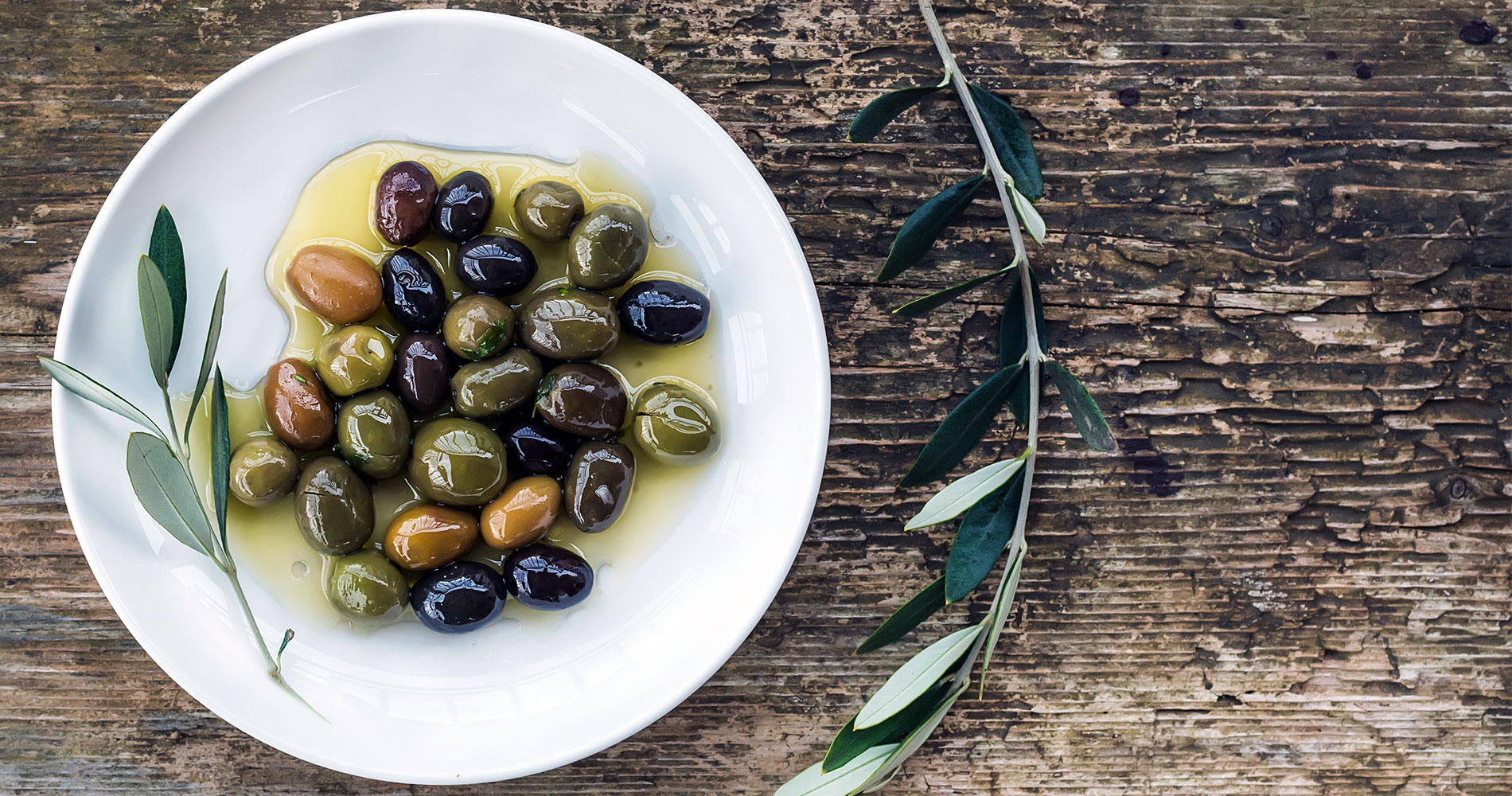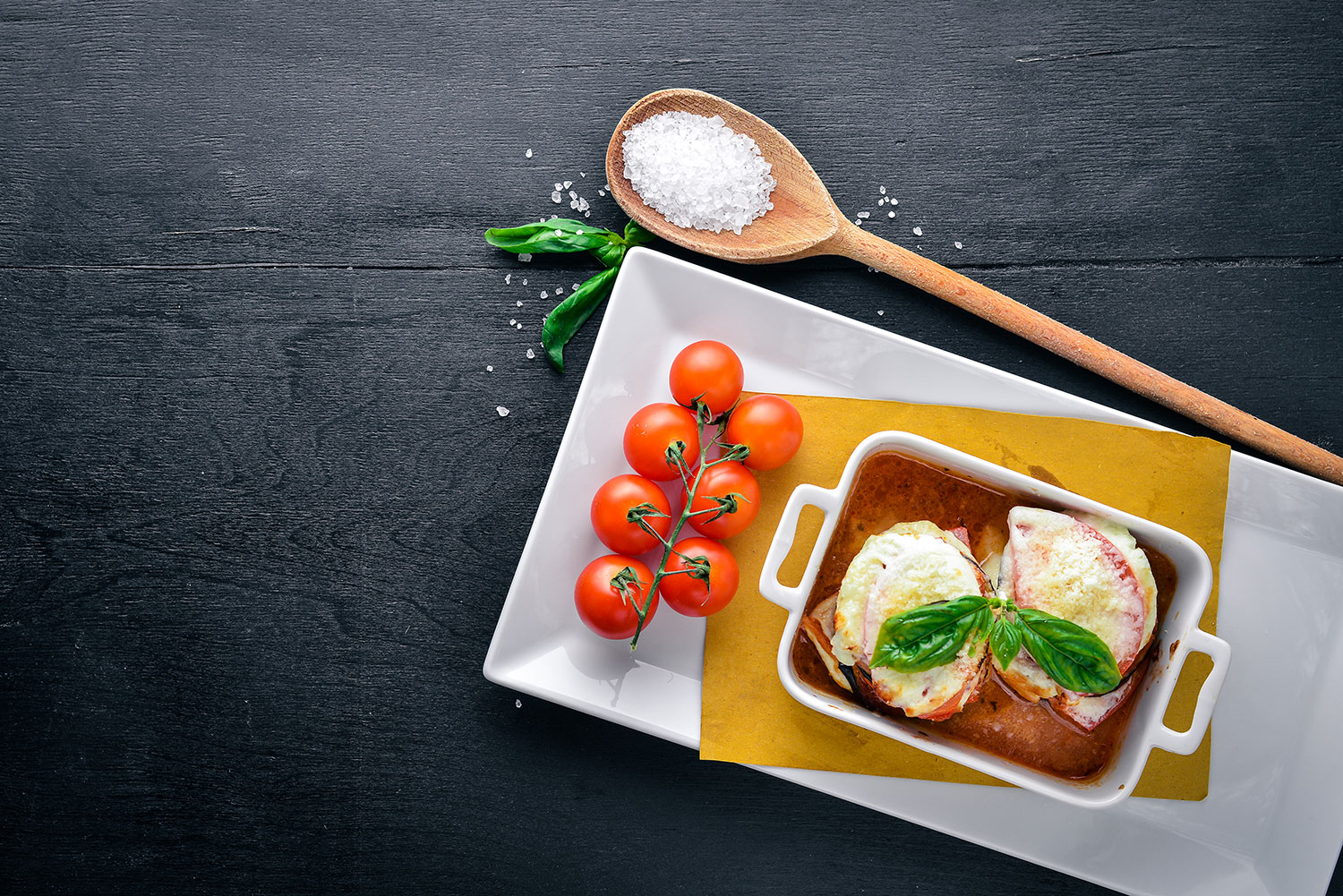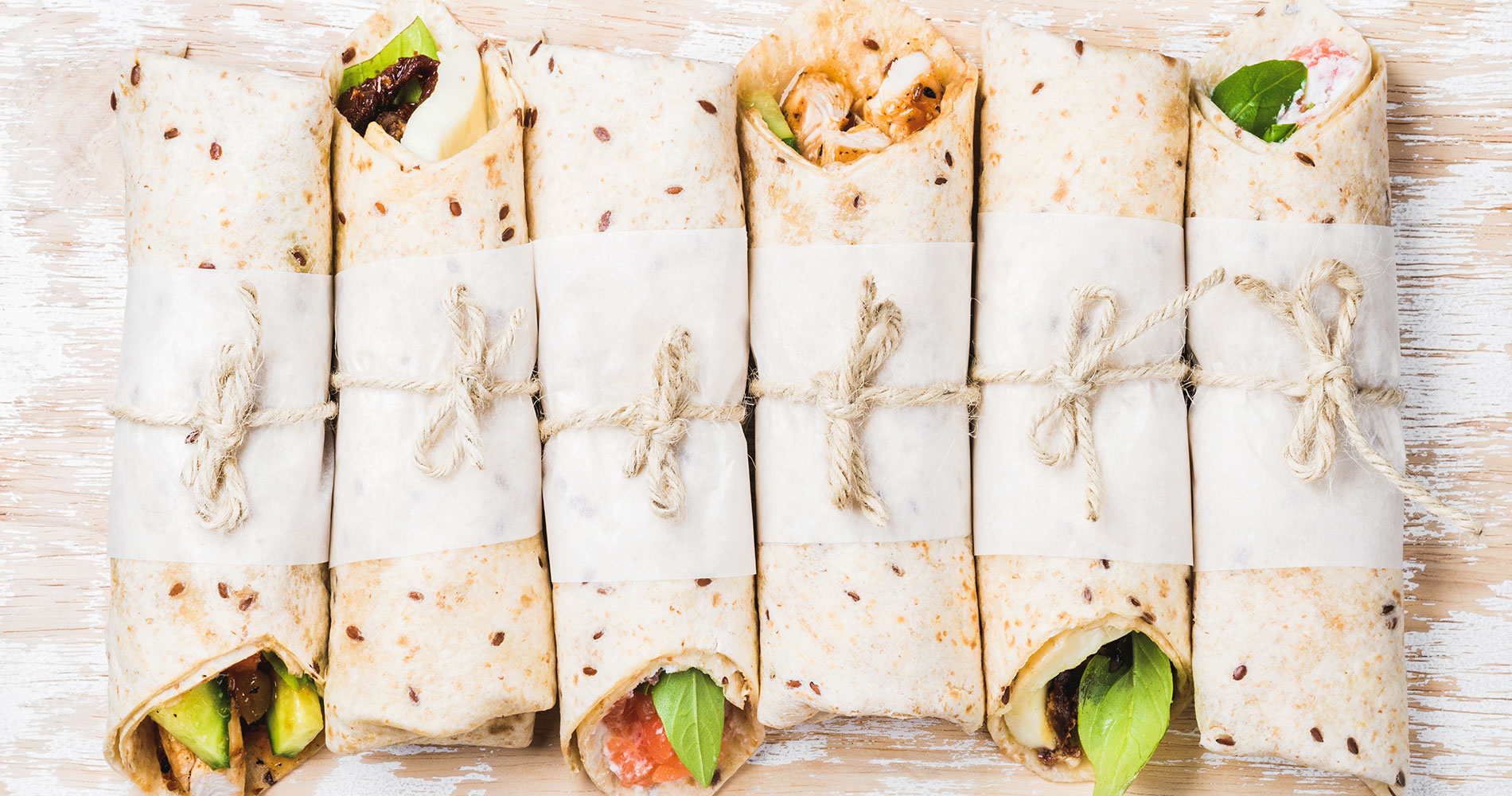Why am I Gaining Weight Despite Diet and Exercise? │ QA
If you’re careful with your nutrition, working out weekly, and still experiencing problems with your weight, take a moment to read this QA.


Which foods assist with loosing back fat? I have a flat stomach but can’t get rid of my back roll/fat.
– Queen

Your question resonates with so many others. Usually carrying extra body fat results in generalized fat deposition. Fat accumulation on the back (posterior torso adipose tissue) is quite common (and may be inherited), and could be a result of yo-yo dieting or age.
Despite numerous products and advertisements, there is no way to target fat loss in that area alone. There is no evidence to support a particular diet or foods for reducing a roll of fat on the back. Spot reduction from exercises does not work either.
The good news: amping up your cardio and cleaning up your diet will help you get the results you want as your overall body fat composition improves!
Some serious basics for your fat-melting meal planning include:
– Debbie J., MS, RD
This article should not replace any exercise program or restrictions, any dietary supplements or restrictions, or any other medical recommendations from your primary care physician. Before starting any exercise program or diet, make sure it is approved by your doctor.
Some questions have been edited for length and/or clarity.
 Have a nutrition question? Our registered dietitian is ready to help!
Have a nutrition question? Our registered dietitian is ready to help!
Email nutrition@lafitness.com or submit your question below and it may be featured in an upcoming article!
If you’re careful with your nutrition, working out weekly, and still experiencing problems with your weight, take a moment to read this QA.
Blood sugar control isn’t easy. These are Debbie’s top recommendations for how to address weight control with Type II Diabetes.
Does Intermittent Fasting give you enough time to pack the day's protein? Our registered dietitian helps clear up the confusion!


I’ve been doing some research and came across the Mediterranean diet as a great way to maintain a healthy weight as well as gaining many lifelong health benefits from the foods/ingredients it’s centered on. Are you familiar with the Mediterranean diet and if so any pointers for transitioning from one diet to a different diet?
– Shelby G.

The key specifics of a Mediterranean style diet depend on who you ask, since it is truly a reflection of a regional dietary pattern, not from one particular person, author or company.
Bordering the Mediterranean Sea are Southern Europe, Western Asia and Northern Africa. Dietary patterns from countries of the latter two started to be referred to as a “Mediterranean Diet” in the 1960’s. According to the Mediterranean Diet, the major source of calories come from grains, fats and oils, with less meat (predominantly beef, pork, and mutton) than other areas, and the remainder of protein is obtained from dry beans and chickpeas1.
Based on the observed health status of southern European countries, the Mediterranean pyramid was introduced in 1993 and serves as the basis for what most people now refer to as the “Mediterranean Diet”, which is what I’ll address.
The Mediterranean style diet emphasizes whole grains, fruits, vegetables, beans, herbs, spices, nuts and healthy fats as core foods. Within the main portion of the pyramid you will find traditional foods such as olive oil, pine nuts (pignolias), broad beans, lentils, chickpeas, barley, oats, potatoes, hard winter wheat, apricots, dates, figs, grapes, melons, pomegranates, broccoli, cabbage, cucumbers, eggplant, mushrooms, onions, peppers, tomato, and zucchini.
Oldways, one of the founders of the original Mediterranean pyramid states “Fish and seafood are typically eaten at least twice a week, and dairy foods – especially fermented dairy like yogurt and traditional cheese – are eaten frequently in moderate portions. Eggs and occasional poultry are also part of the Mediterranean Diet, but red meat and sweets are rarely eaten.”
As far as weight maintenance goes, research shows a definite positive effect for those following a Mediterranean style diet. I could list all sorts of individual studies, but researchers have already compiled all of the findings into a summary2. Weight and body mass index tend to go down (coupled with exercise and energy restriction) on a Mediterranean diet, especially if done over 6 months. This would seem surprising, given that fat provides over 30% of calories. The power of whole grains, ample produce and limited saturated fat are the trick!
Besides the change in lifestyle (shopping/cooking), I’d consider your gut happiness in transitioning from one diet to another. A drastic change in intake can upset your intestines. If you have a sensitive stomach, consider incorporating only a few new items daily. After 2 or 3 weeks you should have fully transitioned into your new dietary pattern.
References:
– Debbie J., MS, RD
This article should not replace any exercise program or restrictions, any dietary supplements or restrictions, or any other medical recommendations from your primary care physician. Before starting any exercise program or diet, make sure it is approved by your doctor.
Some questions have been edited for length and/or clarity.
 Have a nutrition question? Our registered dietitian is ready to help!
Have a nutrition question? Our registered dietitian is ready to help!
Email nutrition@lafitness.com or submit your question below and it may be featured in an upcoming article!
If you’re careful with your nutrition, working out weekly, and still experiencing problems with your weight, take a moment to read this QA.
Blood sugar control isn’t easy. These are Debbie’s top recommendations for how to address weight control with Type II Diabetes.
Does Intermittent Fasting give you enough time to pack the day's protein? Our registered dietitian helps clear up the confusion!


I’m a single bachelor, and I work about 60 to 70 hours a week, so I always end up eating out instead of cooking. I was looking for some 1-pot recipes that I can cook and pack up at work and eat at night as well. Any recommendations?
– Robert W.

I’ve tried a few 30-minute meals recipe books and always found that including pre-cooked meats or already-diced ingredients was a bit of a cheat. But you’ve got to save time somewhere, and it often comes at an expense (of money) or in sacrifice of nutrition. My advice is to either prepare your meats and raw produce in bulk when you bring them home from the store, or buy a few already-prepped convenience ingredients.
One big-time saver is pre-cut fresh produce, such as a container of onion and bell pepper strips or a mirepoix mix of diced onion, celery and carrot. Frozen plain vegetables are simple to microwave or steam. No-salt-added canned corn kernels, sliced beets or diced tomatoes are simple to pop open, drain and add to an appropriate dish for a pop of color, fiber and vitamins/minerals.
Simple, healthy and easy-to-prepare meals often mean 1-pot cooking. For example, in a heated large stir-fry or fry pan, you can start by searing chunks of your preferred protein, add chopped vegetables, then pour in a bagged frozen meal and cooking until heated through when sauce is melted and starch (pasta, potato or rice) is soft. Voila two portions become three with less sodium per serving!
Starting a slow-cooker in the morning makes coming home to a finished meal easier. Choosing your recipe and prepping your ingredients the night before means just turning on the cooker and popping in your food before leaving for work. Remember that smaller chunks of food cook faster. You can adjust heat settings and total cook time for larger items like whole chicken breasts or pork loins.
See our article Inexpensive Meal Prep | Q+A for more tips.
– Debbie J., MS, RD
This article should not replace any exercise program or restrictions, any dietary supplements or restrictions, or any other medical recommendations from your primary care physician. Before starting any exercise program or diet, make sure it is approved by your doctor.
Some questions have been edited for length and/or clarity.
 Have a nutrition question? Our registered dietitian is ready to help!
Have a nutrition question? Our registered dietitian is ready to help!
Email nutrition@lafitness.com or submit your question below and it may be featured in an upcoming article!
If you’re careful with your nutrition, working out weekly, and still experiencing problems with your weight, take a moment to read this QA.
Blood sugar control isn’t easy. These are Debbie’s top recommendations for how to address weight control with Type II Diabetes.
Does Intermittent Fasting give you enough time to pack the day's protein? Our registered dietitian helps clear up the confusion!


I have been hearing also about a ketogenic diet using exogenous ketones. I’m 63 years old, 5’4″ and weigh 170. I joined LA fitness two weeks ago and I’m working with a trainer. My goals are weight loss and strength training. I’ve been doing (and I’m committed to) about 45 minutes of cardio 3-5 times per week and weight training 3 days a week. I am in fairly good health with well controlled mild hypertension as my only health concern. Any information you could provide or direct me to would be appreciated.
– Susan D.

I had to do a little research on this one, Susan, but I am glad to be kept on my toes! For our other readers: exogenous ketones are those ingested as supplements as opposed to those produced by the body (called endogenous). The intended goal of dietary-induced ketosis is for the body to use ketones, or fat-derived compounds, as an alternative fuel source instead of carbohydrates for certain body systems.
An outside source of ketones, such as beta-hydroxybutyrate (BHB), in the absence of glycogen depletion, will only produce a short-term state of ketosis lasting a few hours. So you’d need to keep taking the product to get an effect prolonged enough to be significant. You could end up spending well over $100/month – ideal for the supplement company!
Money Down The Drain
During forced ketosis, the body regulates ketone production by shutting down the liver’s production of endogenous ketones and getting rid of excess ketones through urinating.
The use of such ketones (and therefore the bulk of research) has been for its effects on Alzheimer’s, cancer, epilepsy and elite athletic performance. Little is known to establish exogenous ketone use for weight loss. In fact, on PubMed.gov, I could not find one study that directly observed exogenous ketone administration and reduction in body weight. Lots of bits of information that might lead one to assume this would be the case, but no evidence to support such a theory.
My advice – You’d likely be better served by consuming natural caffeine sources to help prolong your cardio workouts for increased fat burning. Coffee won’t break the bank, either!
– Debbie J., MS, RD
This article should not replace any exercise program or restrictions, any dietary supplements or restrictions, or any other medical recommendations from your primary care physician. Before starting any exercise program or diet, make sure it is approved by your doctor.
Some questions have been edited for length and/or clarity.
 Have a nutrition question? Our registered dietitian is ready to help!
Have a nutrition question? Our registered dietitian is ready to help!
Email nutrition@lafitness.com or submit your question below and it may be featured in an upcoming article!
If you’re careful with your nutrition, working out weekly, and still experiencing problems with your weight, take a moment to read this QA.
Blood sugar control isn’t easy. These are Debbie’s top recommendations for how to address weight control with Type II Diabetes.
Does Intermittent Fasting give you enough time to pack the day's protein? Our registered dietitian helps clear up the confusion!


Two questions for you, actually! Hope you don’t mind!
1.) I’m struggling to think of easy, healthy options to take with me to work to eat for lunch. I’m not much of a meat eater, but I do like chicken. Any suggestions?
2.) I’m also struggling with the fact that it’s winter, and all my cravings seem to be the warm, unhealthy “comfort foods”. I’m lately craving mac and cheese, heavy soups, and things of that nature. Any suggestions for something that’s “warm and cuddly” without all the fat and calories? Thank you so much!
– Megan K.

For easy, healthy lunch options my suggestion would be to assemble wraps and hearty salads/soups, or to use leftovers. Roll up some hummus, cucumber, tomato and feta in a spinach or sun-dried tomato tortilla. You can add a handful of beans and chicken breast strips to a pre-made salad in a bag. Since it takes a full can of soup (2 cups) to make a decent meal, pair the soup with raw produce so you don’t add sodium. Leftovers are quickest, of course – just place in the containers you’ll take to work when storing them.
Enjoy the comfort foods as a smaller side dishes instead of as a main entrée, or find ways to lighten the recipes. For instance, using low-fat cheese plus adding ham and peas in your mac & cheese, or having a scoop of the real thing accompanied by a grilled chicken breast and steamed broccoli. A bisque soup or chowder pairs with whole grain bread sticks and celery stalks. My all-time favorite warm treat is made by spreading almond butter on freshly made rye toast, topping with apple slices and a sprinkle of cinnamon, and placing back under the broiler. Using fresh ingredients from room temperature (except meats/dairy) enhances the flavors and makes heating quick.
– Debbie J., MS, RD
This article should not replace any exercise program or restrictions, any dietary supplements or restrictions, or any other medical recommendations from your primary care physician. Before starting any exercise program or diet, make sure it is approved by your doctor.
Some questions have been edited for length and/or clarity.
 Have a nutrition question? Our registered dietitian is ready to help!
Have a nutrition question? Our registered dietitian is ready to help!
Email nutrition@lafitness.com or submit your question below and it may be featured in an upcoming article!
If you’re careful with your nutrition, working out weekly, and still experiencing problems with your weight, take a moment to read this QA.
Blood sugar control isn’t easy. These are Debbie’s top recommendations for how to address weight control with Type II Diabetes.
Does Intermittent Fasting give you enough time to pack the day's protein? Our registered dietitian helps clear up the confusion!
Be the first to know about exclusive
content, deals and promotions